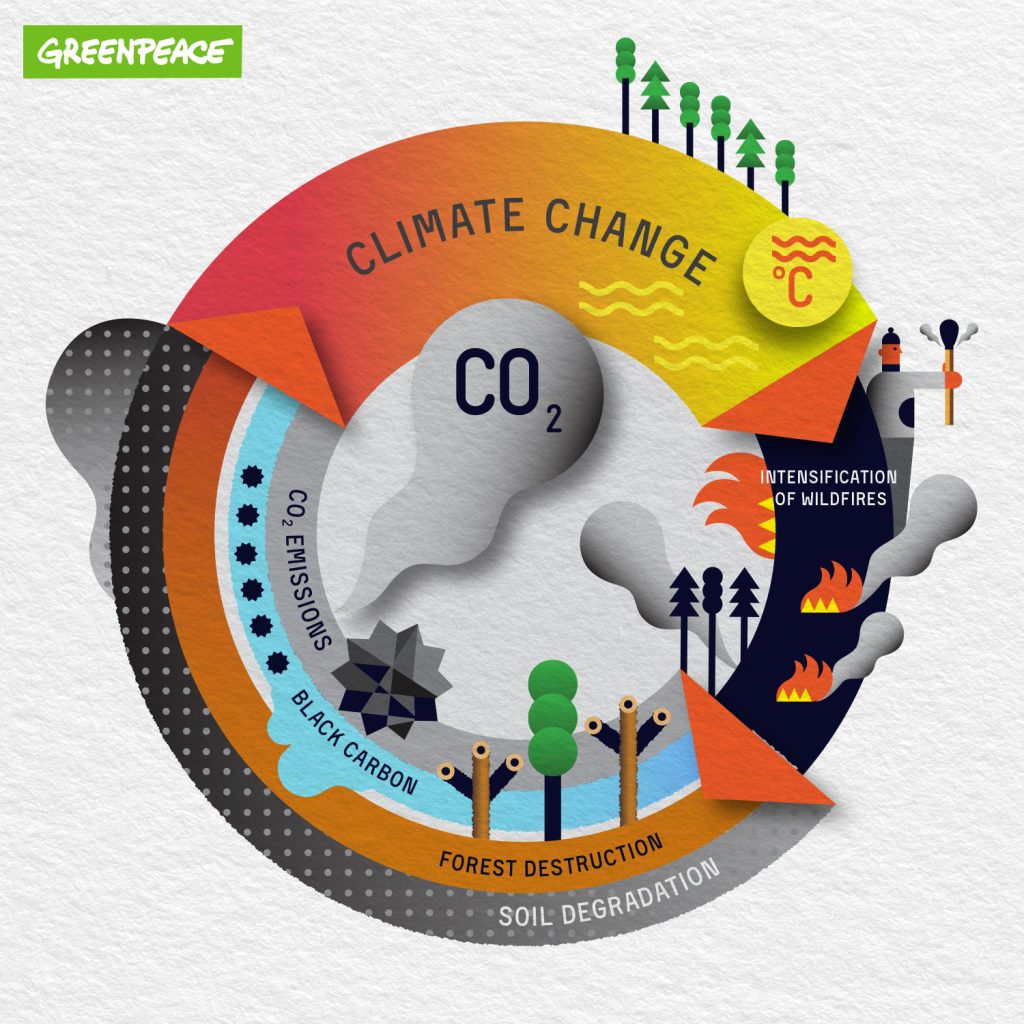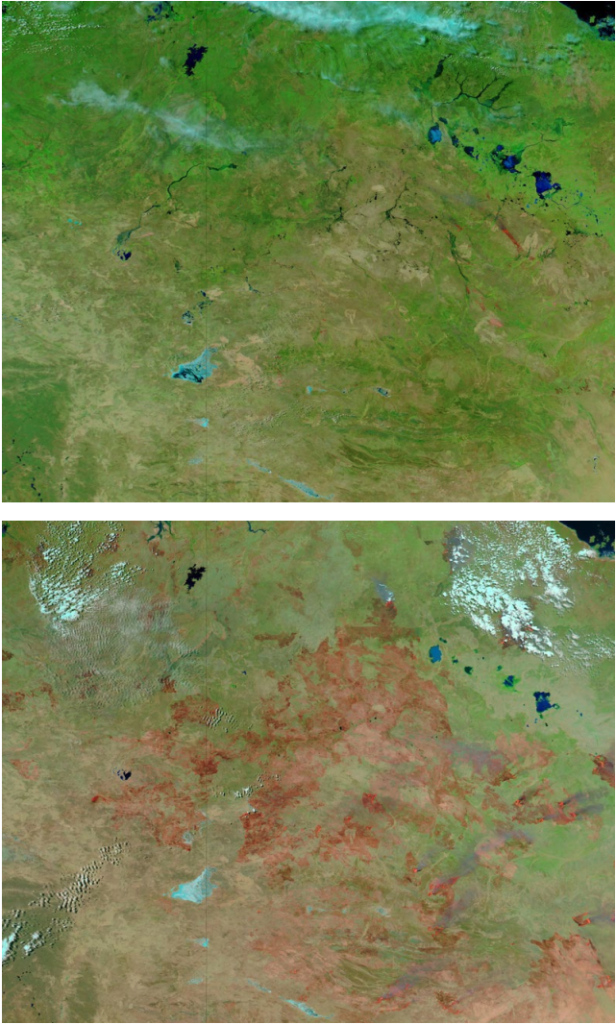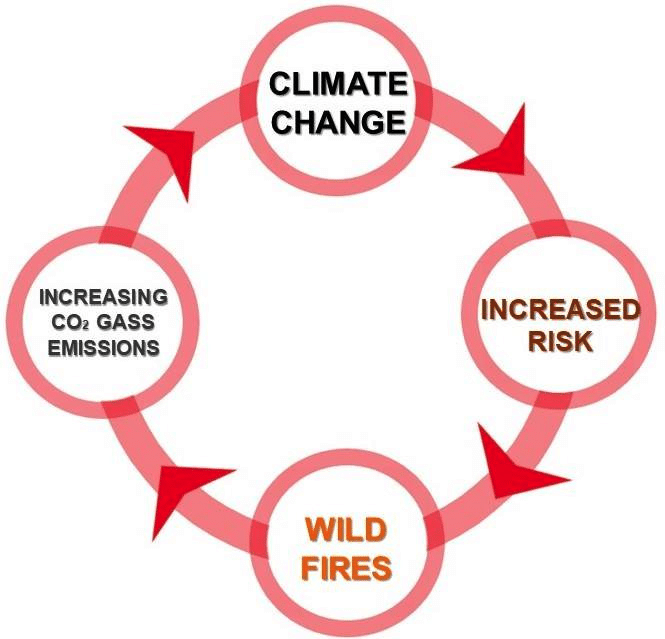Wildfires are becoming an increasingly significant global issue, causing severe damage and releasing an alarming amount of carbon into the atmosphere. Forest fires are emitting more greenhouse gases and particulate matter into the atmosphere than previously assumed in climate targets. Recent research reveals that the 2020 bushfires in Australia, combined with drought conditions, released nearly twofold more carbon than what is usually emitted by fossil fuel emissions in an entire year. Even more alarming, in 2021 alone, wildfires released more than double Germany’s yearly CO2 output! As the effects of climate change continue to unfold, the risk of wildfires and their impact on greenhouse gas emissions will continue to increase.
This makes early detection of wildfires crucial in mitigating their impact. Innovative solutions such as exci’s AI-powered wildfire detection system can significantly improve the speed and accuracy of wildfire detection. In this blog post, we will delve deeper into the impact of wildfires on greenhouse gas emissions and how exci’s early wildfire/bushfire detection technology can significantly mitigate their effects.
Australian Bushfires’ Impact on the Carbon Cycle
New research by an international team—including the University of Wollongong (UOW) and NASA’s Jet Propulsion Laboratory (JPL)—has revealed the staggering carbon impact of Australia’s 2019–2020 bushfire season. Published in AGU Advances, the study found that the fires, compounded by severe drought, released nearly double Australia’s annual fossil fuel emissions.
The researchers used data from three satellites—Orbiting Carbon Observatory-2 (OCO-2), TROPOMI, and MODIS—alongside UOW’s atmospheric gas measuring instrument, which has been in operation for 25 years. This multi-source approach allowed them to track both carbon dioxide and carbon monoxide emissions, as well as ecosystem recovery after the fires.
According to Dr Nicholas Deutscher of UOW’s Centre for Atmospheric Chemistry, the extreme drought prior to the fires had already suppressed photosynthesis, reducing the landscape’s natural ability to absorb carbon. When the fires erupted, the ecosystem’s carbon uptake was already weakened, amplifying the overall atmospheric carbon burden. He also noted that bushfires are not carbon-neutral, a finding that challenges a widespread but outdated belief.
The study estimates that the fires in New South Wales and Victoria alone released approximately 400 mega tonnes of CO₂, pushing Australia’s total carbon emissions for 2019 to around 900 million tonnes. The resulting smoke plumes travelled across the globe, impacting air quality as far as New Zealand, South America, and even Antarctica. Unlike previous fire seasons, these fires destroyed vast carbon-storing forests, rapidly releasing decades of stored carbon into the atmosphere.
Dr Brendan Byrne from JPL added that ecosystems affected only by drought rebounded relatively quickly when cooler, wetter conditions returned. In contrast, burned regions lost decades of carbon storage in a single year, and full ecological recovery may take 20 years or more—especially if the frequency of extreme fires continues to increase under climate change.
Supporting these findings, NASA research scientist Niels Andela cited two independent studies using satellite heat signature data, both of which reached similar estimates of greenhouse gas emissions. However, he cautioned that near-real-time fire emission estimates carry up to 50% uncertainty due to the limitations of historical baseline data.
The fires occurred during Australia’s hottest and driest year on record. December 2019 alone broke national heat records, a clear signal of intensifying climate extremes. As global temperatures continue to rise, real-time wildfire emissions monitoring is becoming increasingly important for understanding our changing climate.
Finally, Professor Rob Jackson of Stanford University warned of the long-term consequences. The destruction of Australia’s forests not only undermines their role as carbon sinks but also poses serious threats to biodiversity. “Even half a billion tons of carbon emissions are substantial,” he said. “They accumulate in the atmosphere and contribute to a feedback loop. We must ask whether these fires mark a transformation of Australia’s ecosystems. satellite and ground-based tools to monitor climate and carbon impacts over time.
 Feedback loop infographic by Greenpeace
Feedback loop infographic by Greenpeace
Record-breaking carbon emissions from wildfires in 2021
According to the Copernicus Atmosphere Monitoring Service (CAMS), in 2021, wildfires in some regions of Siberia, the United States, and Turkey released a record amount of carbon emissions. Globally, these fires emitted 1.76 billion tonnes of carbon, more than double the amount produced by Germany’s yearly CO2 emissions. Certain areas, including parts of Siberia’s Yakutia region, Turkey, Tunisia, and the western United States, had their highest recorded wildfire emissions between January and November.
CAMS’ senior scientist Mark Parrington attributes the increase in flammability and fire risk of vegetation to the hotter and drier regional conditions caused by climate change. Although global wildfire emissions in 2021 were not the highest since 2003, CAMS believes these emissions will continue to increase as the effects of climate change unfold.
In particular, Yakutia in northeastern Siberia had its highest CO2 emissions from wildfires during the summer since 2003. Meanwhile, there were numerous fires in western Siberia, producing daily CO2 emissions that were significantly above the average between 2003 and 2021. Fires in Canada, California, and the US Pacific Northwest released about 83 million tonnes of CO2, generating large smoke plumes that reached Europe through the Atlantic.
Prolonged La Nina Event Worsens Grass Fire Risk
As La Nina fades, Australia is facing a high risk of devastating grass fires in 2023 due to tinder-dry vegetation that has thickened over three years of above-average rainfall, warns the Climate Council. The rapid grass growth, accelerated by widespread rain, will dry out, and high temperatures will further exacerbate the threat to other regions, creating powder keg conditions for future fires. While grass fires typically burn less intensely, they can spread more rapidly than forest fires because of the oxygen surrounding standing grass, with flame fronts recorded at speeds up to 25 km per hour.
Also, grass fires can generate intensities of up to 30,000 kW/m due to worsening climate change conditions. A combination of hot and dry conditions with strong winds could see grass fires unfold more destructively and deadly than Australia has ever experienced. Based on history and experience, once fire intensity exceeds 4,000 kW/m, it will be very difficult for firefighters to control the fire through direct attack methods.
Climate Council’s founder, Greg Mullins, warned that conditions will worsen if the forecast El Nino dry weather system persists during the cooler months and into next summer. There is an increased risk for significant grass fires breaking out during hot, dry, and windy weather across several states up to and possibly including April.
History shows that after a La Nina event, severe grass fires followed. The 2011-12 Australian bushfires following heavy spring rains were among the most extensive fires on record.

Grass-covered land burned in Australia; Source: Response Team at NASA GSFC. Caption by Holli Riebeek. https://earthobservatory.nasa.gov/images/52354/vast-area-
The first image above, taken on April 11, 2011, shows thick grass in response to the La Nina event in late 2010 and early 2011, changing to drier weather and providing more fuel for fires. The second image, taken on September 30, 2011, shows the transformation of the landscape as a result of the fires. The burned area extends across Northern Territory, Western Australia, Queensland, and South Australia, covering more than 130,000 square kilometres – an area roughly the size of England. Authorities monitored 21 large fires on September 30, and the fire season was expected to continue for several months.
The analysis report titled “The Powder Keg: Australia Primed to Burn” which has been just released (February 2022) by the Climate Council and the Emergency Leaders for Climate Action (ELCA) calls for an increase in funding for emergency services and long-term disaster recovery efforts to respond to escalating disasters. Mullins stressed that the only solution to prevent future un-fightable fires is worldwide efforts to reduce emissions urgently to address climate change.
Using exci’s AI to Break the Wildfire-Climate Cycle
Climate change is one of the most critical sustainability dilemmas that humanity has ever faced. If we don’t take action fast, it will only get worse. Responding to the bushfires of 2019-20, Emergency Leaders for Climate Action (ELCA) submitted several recommendations in their final report of the National Bushfire and Climate Summit (2020) to aid state and territory firefighting efforts. One of them is to invest in innovative solutions such as early wildfire detection technologies.
Early detection of wildfires is crucial in mitigating their impact on greenhouse gas emissions. Traditional methods of wildfire detection, such as aerial surveys or human patrols, can be time-consuming, expensive, and not always effective in detecting fires in remote or inaccessible areas.
In 2015, the United Nations Member States adopted a set of 17 Sustainable Development Goals (SDGs) to end poverty, guard our planet and guarantee that everyone lives peacefully and prosperously. According to a study published in Nature, Artificial Intelligence could help achieve specific targets of the SDGs; one of them is helping to reduce greenhouse gas emissions.
exci’s AI-powered wildfire detection system can significantly improve the speed and accuracy of wildfire detection, allowing for faster and more effective response times.
exci employs advanced artificial intelligence models based on deep machine learning algorithms. These models have been trained on over one billion camera data and 500,000 satellite images yearly. This rigorous training has resulted in unparalleled accuracy and speed. While the ground-based camera system enables rapid fire detection within minutes of ignition during daylight hours, satellites (geostationary and low earth orbiting) are better suited for large-scale, remote coverage, night-time detections, and monitoring and tracking of fires.
exci’s AI wildfire/bushfire detection technology is vital in mitigating the feedback loop that exacerbates climate change. Since wildfires contribute significantly to annual global CO2 emissions, early detection and prevention are essential to minimizing their devastating environmental impact.
Since the inception of our system, we have successfully detected an astonishing 121,000 fires and counting., significantly reducing the economic, environmental, and social impact on exci’s customers and their communities.
exci is the only AI-powered Early Bushfire Detection System that has been proven in large-scale deployments, monitoring 130 million acres across California with more than 1,000 cameras and over 25 million acres of plantations and forestry in Australia.
Check out the following short video:
Don’t let hazardous events become catastrophic!
Get in touch with our friendly team who are happy to give you a full demonstration of how exci’s system detects wildfires within minutes following ignition. Let us help you to protect your assets and at the same time reduce greenhouse gas emissions:
Australia:
Phone: 1300 903 940
International:
Phone: +61 458 594 554
email: info@exci.ai:
Visit us on our website and find out more https://www.exci.ai/
by Gabrielle Tylor
exci – The Smoke Alarm for the Bush

